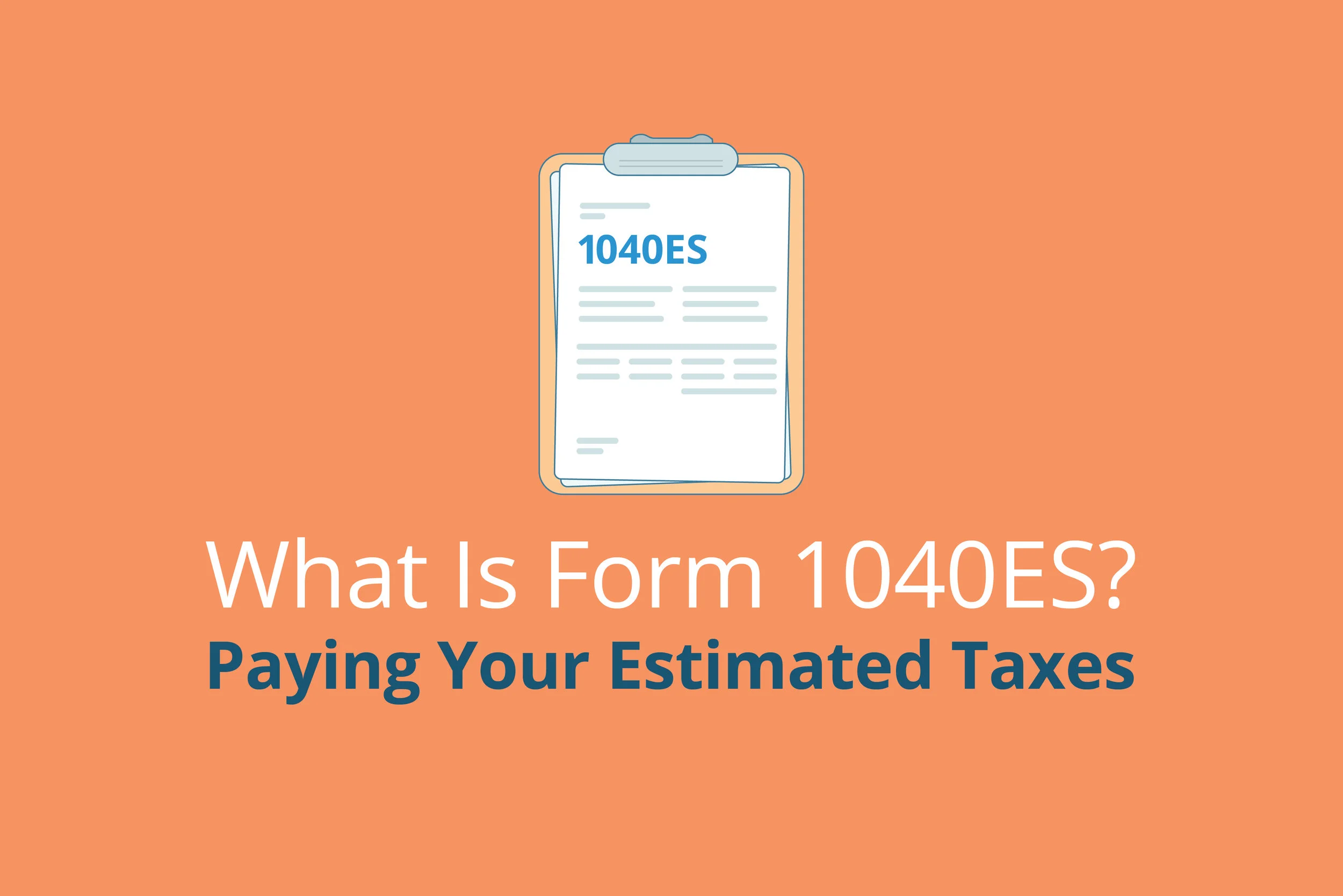What Is Form 1040 ES? Paying Your Estimated Taxes
The Gist:
Form 1040 ES is a worksheet to help self-employed individuals calculate their taxable income, required taxes, and refundable tax credits.
Form 1040 ES is needed because it assists in estimating the tax owed for accurate quarterly payments.
Form 1040 ES calculates estimated taxes for the current year, and Form 1040 reports actual income for the previous year.
Primarily, self-employed workers who expect to owe $1,000+ in taxes for the year and those with significant income from certain sources should use Form 1040 ES.
You should only submit paperwork with your quarterly tax payments if paying via check or money order. Online payments don't require Form 1040 ES submission.
In this Article:
In Short:
The IRS Form 1040 ES is for individuals who earn income where tax isn't withheld. Examples include self-employment income, rental income, or interest and dividends; there may be a need to make periodic estimated tax payments. The Form 1040 ES helps taxpayers calculate and pay these estimated taxes. It includes a worksheet to determine the amount of estimated tax owed and vouchers for sending in payments.
Form 1040 ES also acts as a guide to help estimate the tax owed, ensuring accurate quarterly payments. Unlike the comprehensive Form 1040, which reports the previous year's income, the 1040 ES focuses on estimating the current year's tax obligations.
With clear deadlines for each quarter, it's crucial to stay updated and make timely payments. Whether you're mailing in your payment with a portion of the form or paying online without the need for submission, understanding the 1040 ES is key to managing your tax responsibilities efficiently.
What is 1040 ES? If you’re self-employed and you expect to owe $1,000 or more in taxes for the year (after deductions and credits), the IRS expects you to make quarterly tax payments. That’s because unlike traditional W-2 employees, your taxes are not withheld from your pay throughout the year. To figure out if (and how much) you owe in quarterly taxes, you’ll need the Form 1040 ES.
But what is Form 1040 ES and what do you do with it? Here’s everything you need to know.
(Don't forget, the FREE Stride App can help you save thousands of dollars on your tax bill and hours of tax prep time by automatically tracking your miles and expenses, surfacing money-saving deductions, and getting your forms IRS-ready. Get it today!)
What Is 1040 ES?
What is the 1040 ES meaning? Well, the meaning of this form is to act as a worksheet that helps you calculate your taxable income, add up required taxes, and figure your refundable tax credits.
This helps you estimate how much tax you owe so you can make accurate payments throughout the year.
Why Do I Need the Form 1040 ES to Pay Quarterly Taxes?
When it comes to quarterly taxes, the hardest part is usually figuring out how much you actually owe.
The Form 1040 ES is almost like a miniature tax return; it will walk you through adding up your expected income and deductions for the coming year, show which credits you'd be eligible for, and then help you figure about how much you can expect to owe in taxes. If you're not sure how much you might owe in taxes for the coming year, the Form 1040 ES can help.
How Is the Form 1040 ES Different From Form 1040?
The Form 1040 ES is used to calculate estimated taxes for the current year. It is very similar to how employers use W-4 forms to withhold taxes from paychecks for their employees.
Alternatively, the Form 1040 is used to report your actual income in its entirety for the previous year; it is used by all taxpayers, both traditionally and self-employed.
Who Uses the Form 1040 ES?
This form is for anyone who suspects they need to pay quarterly taxes, primarily self-employed workers who expect to owe $1,000+ in taxes for the year.
You may also need to make estimated payments if you earn significant income from certain sources, like a business you own or a trust.
When Are Your Quarterly Tax Payments Due?
Q4 Deadline (for 2022): January 17, 2023
File estimated taxes for September 1 to December 31Q1 Deadline: April 18, 2023
File estimated taxes for January 1 to March 31Q2 Deadline: June 15, 2023
File estimated taxes for April 1 to May 31Q3 Deadline: September 15, 2023
File estimated taxes for June 1 to August 31Q4 Deadline: January 15, 2024
File estimated taxes for September 1 to December 31
Where Do I Send My Form 1040 ES?
You’ll only need to submit paperwork with your quarterly tax payments if you’re paying via check or money order. If you’re paying via one of those two methods, you’ll need to send in a portion of the Form 1040 ES along with your mailed-in payment.
If you’re paying your quarterly tax payments online, you can simply make a payment here without submitting any part of your Form 1040 ES.
Help! I Still Have Questions
Confused about self-employment taxes? We’re here to help!
Send us you questions about quarterly payments here.

